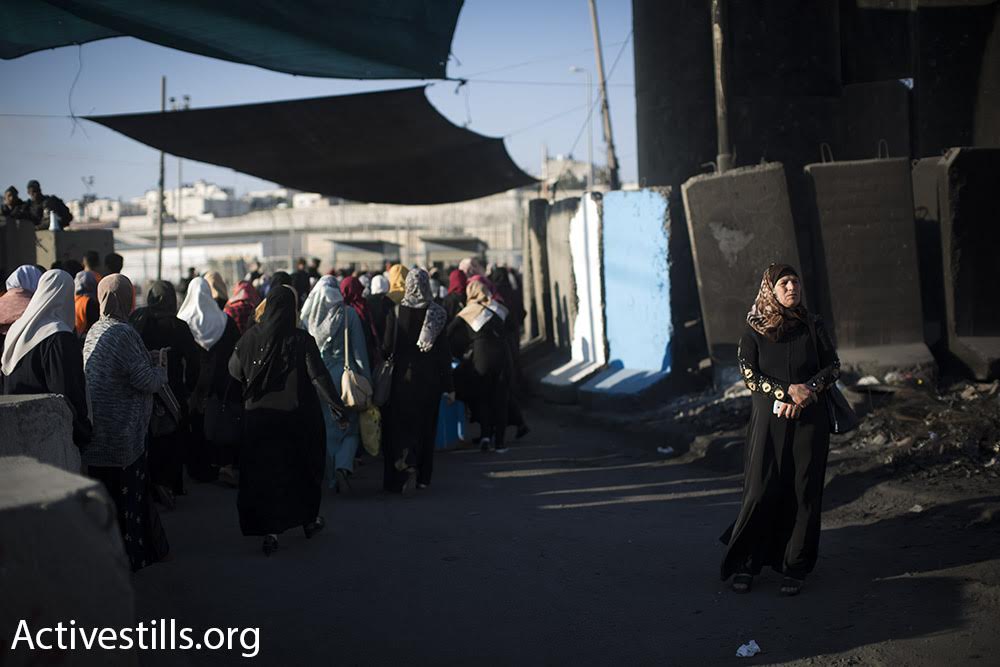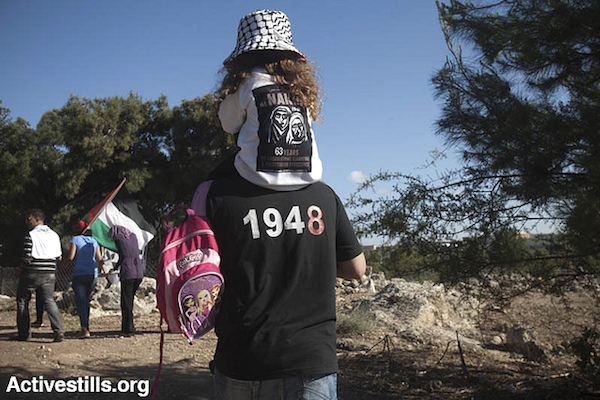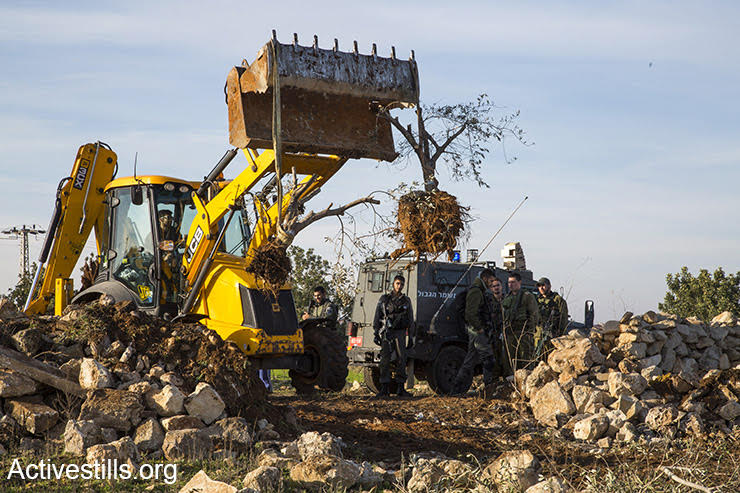Ignoring Palestinians, whether the refugees from the 1948 War or those who remained under military rule in the occupied territories, is part and parcel of our Zionist outlook.
By Gil Gertel

We love to talk about the occupied territories. Because they are silent and they do not throw rocks at us. We have developed a large arsenal of justifications and explanations that we love to repeat to ourselves: this land was promised to us, we were expelled from them, we always yearned for them, they were empty, we bought them with money, we made them bloom, we protected them with blood — thus the occupied territories are ours, and therefore they cannot be occupied.
None of these arguments justify 50 years of military rule over millions of Palestinians bereft of human rights. But we have come up with a strategy: we skip from argument to argument, again and again, until we confuse and tire out our interlocutors. When we argue with ourselves, we are always the victors. We are always right. Until the next attack, until the next argument.
It is easy to talk about the occupied territories — it is harder to talk about occupied people. Israel’s education system did not create this mindset; in fact, it was formed with the beginning of Zionism. A story of a bare land, waiting only for us.
The forgotten people
I know it’s an imaginary story, because even back then there were few who saw it anyway. In 1905 Zionist educator Yitzhak Epstein wrote the following: “We have forgotten one thing: there is an entire nation in this land that we have coveted, one that has held on to it for hundreds of years and never thought about leaving […] thus, when we come to take hold of the country, the question immediately arises: what will the fallahim do, whose fields we will buy?”
In the wake of the 1948 War, the list of people we forgot only got longer — refugees whom we continued not to see. This is what students read about that period from the “Artzi” textbook, published in 1950: “It is very good that we found a desolate and abandoned land. It is good that every piece of land we obtained is for us […] none of those who hate us (and their numbers are great) can complain that we took someone else’s land.
This textbook was written two years after approximately 750,000 Palestinians were made refugees, before most of their homes were demolished, and when tens of thousands of Jews (many of them refugees) were brought in to live in those homes. And yet we could not see, and we taught or children that it was a good thing that this land was empty, since now we don’t have any enemies (even though their numbers are great), and the house we live in doesn’t belong to anyone else.

In 1967, the list of forgotten people grew to include an occupied population, alongside those refugees. But Zionist society, and its education system, had an answer ready: ignoring them. This is what we teach our children, from a fifth-grade textbook: “In 1967, following the Six-Day War, the territories of Judea and Samaria, which were not yet in Israeli hands, came under its control. Today it is populated by both Arabs and Jews. The Arab population, according to estimates, is comprised of 1.5-2.5 million people, who live mostly in urban areas […] the Jewish population is closer to 400,000, who live in approximately 125 settlements.” (pg. 156). How idyllic: those territories “came under our control,” a real miracle. Jews and and Arabs living side by side — the Switzerland of the Middle East.
This infantilizing image of reality is taught in high schools as well. Here is an excerpt from “Israel in the 21st Century,” which prepares students for their matriculation exams: “Settlement in Judea and Samaria has taken place throughout the years under conditions of both political and security-based uncertainty […] the geographical proximity between Jewish and Arab settlements bring about violent confrontations between the two populations, which harms the security of the settlements and along the roads. Thus, in order to improve the accessibility of the Jewish settlements and security on the roads, the roads leading to Arab settlements were separated from those leading to the Jewish settlements, and the presence of IDF forces in the area was increased.” (pg. 207)

Military occupation? Military rule? No, no, no! It is the geographical proximity that “brought about” the violence, and because of that violence IDF presence was increased. An inverted, distorted world in which the army is seen as the consequence, not as the reason for the violence. And in order to pour salt on the wounds, we bask in the fact that we have an excellent education system, since after all, the second stated goal of the Israeli education system is to “develop respect for human rights, basic freedoms, democratic principles, rule of law, different cultures, and educating toward peace and tolerance in interpersonal relations as well as between nations.” You see? We’re okay. Show me one Arab country that has such nice education goals.
The first step: Ending the occupation
Fifty years without occupied people, neither in Israel nor in its education curriculum. Those who have passed through this system grow up to be parents, teachers, and authors of educational textbooks. The occupied don’t exist, just as their parents, refugees, didn’t exist.
In Hebrew education, ever since the inception of Zionism, facts could not actually be taught in the class. Nor could they be brought to the public sphere, including the media. Parents, teachers, and students are not primed enough to see. This becomes clear Education Minister Naftali Bennett’s persecution of Breaking the Silence. Just don’t break the silence, or the blindness.
Hebrew education hasn’t changed during the years of the occupation, since ignoring it has been the only way to deal with the terrible reality for which we are responsible. But the education system itself does not have the power to change reality. Schools are not the place to fix what adults cannot see. The cause and effect are opposite: education cannot bring peace and an end to the occupation. The first step to fixing our education is ending the occupation.
Gil Gertel is an educator and a blogger at Local Call, where this post was originally published in Hebrew.


